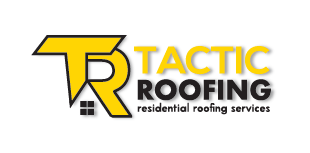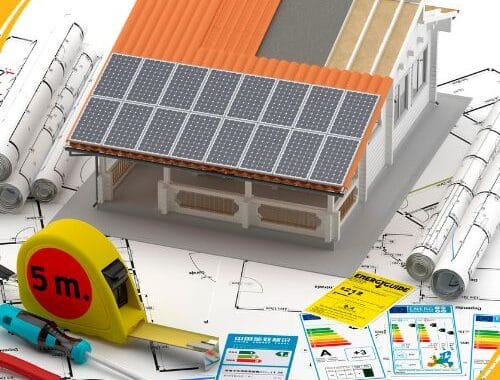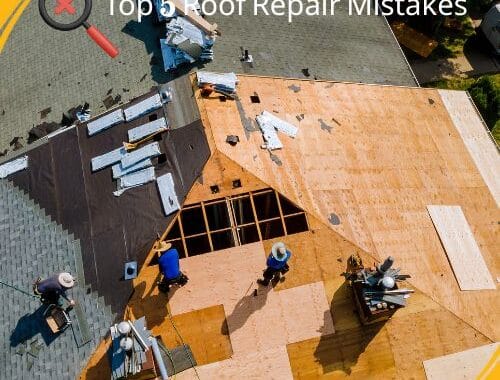You hear it first—howling wind against the windows, branches thudding on the roof. Then come the rains, heavy and relentless. Hours later, the skies finally clear. Your home looks fine at a glance. No gaping holes, no collapsed ceilings. So, you move on.
But here’s the reality: not all roof damage after a storm is immediately obvious.
Many homeowners make the critical mistake of waiting too long to act. And in the world of roofing, delays don’t just cost money—they multiply it.
In this article, we break down why postponing roof repair after a storm can quickly snowball into expensive, stressful, and even dangerous consequences. If you’ve ever thought “I’ll deal with it later,” this is for you.
The Calm After the Storm: Why It’s Deceptive
Storm damage isn’t always a fallen tree or a gaping hole in your ceiling.
Most storm-related issues are subtle at first:
- Lifted or missing shingles
- Cracked flashing
- Small punctures from debris
- Clogged gutters or dislodged downspouts
- Saturated insulation in the attic
These signs may not trigger alarms immediately. But beneath the surface, water is already infiltrating, insulation is degrading, and structural wood is being compromised.
Top Reasons to Act Quickly After Storm Damage
1. Water Doesn’t Wait—And It Travels
A single loose shingle can allow water to seep beneath your roofing layers. And once it gets inside?
- It follows gravity, often soaking insulation before reaching ceilings or walls.
- Mold can begin to grow within 24–48 hours in humid conditions.
- Electrical systems can be affected, creating potential fire hazards.
2. Your Insurance Claim Has a Shelf Life
Most homeowner insurance policies require damage to be reported promptly—sometimes within days. If you wait too long:
- Your claim could be denied.
- The insurer might argue that the damage was due to neglect, not the storm.
- You’ll pay out of pocket for preventable damage.
Tip: Document the storm date and take post-storm photos even if you don’t see major damage.
3. Delays = Costly Structural Repairs
The longer damage festers, the more it spreads.
| Damage Type | If Repaired Immediately | If Delayed Weeks or Months |
|---|---|---|
| Missing shingles | $100–$300 | $2,000+ (decking rot) |
| Small roof puncture | $150–$400 | $5,000+ (mold remediation) |
| Gutter damage | $150–$350 | $1,500+ (foundation issues) |
| Minor flashing issue | $200–$500 | $3,000+ (leak expansion) |
4. Storms Are Often Repetitive
One storm may weaken the roof. The next one, even a minor rain, could cause significant leaks. When you delay repairs, your home becomes more vulnerable to even normal weather.
What Storm Damage Can Look Like
Still not sure if your roof was affected? Here’s a quick checklist of signs to look for:
Exterior Signs:
- Loose or missing shingles
- Bent or missing flashing
- Debris accumulation in gutters or valleys
- Water stains on soffits or fascia
- Sagging rooflines
Interior Signs:
- Water stains on ceilings or walls
- Damp attic insulation
- Moldy or musty smells in upper rooms
- Peeling paint or bubbling drywall
If you spot any of these, schedule an inspection immediately—even if it seems minor.
Myth-Busting: Common Excuses for Delaying Repairs
Let’s address the inner voice that tells you to wait:
❌ “It’s just cosmetic.”
Truth: What looks like a simple crack or missing shingle can lead to structural rot within days.
❌ “I’ll deal with it when it leaks.”
Truth: By the time you see a leak inside, the damage has already spread—especially to insulation, ceilings, and support beams.
❌ “The roof looks okay from the ground.”
Truth: Storm damage is often not visible unless you’re on the roof, looking at the seams, flashing, or under shingles.
How Fast Should You Act?
Within 24–48 hours of a major storm, schedule a professional roof inspection.
Here’s what a timely response can do:
- Identify invisible issues before they worsen
- Document damage for insurance properly
- Prevent expensive internal repairs
- Restore energy efficiency (damaged insulation = higher HVAC bills)
A Closer Look: The Ripple Effect of Inaction
Let’s follow a real-world scenario:
Initial Damage: A tree limb cracks two shingles and dislodges gutter sections.
Week 1: Water seeps under the cracked shingles. No interior signs yet.
Week 3: Insulation becomes damp. Heating and cooling becomes inefficient.
Week 6: Ceiling stains appear. Mold growth starts in the attic.
Month 2: Insurer denies claim, citing delayed response. Out-of-pocket costs mount.
It started with a 20-minute fix. Now it’s a $7,000 remediation job.
Why Choose Tacticroofing After the Storm?
We’re not just about patching holes. At Tacticroofing, we approach storm damage with a full-scope mindset:
- Same-day inspections available after major storms
- Detailed photo documentation for insurance support
- Thermal imaging tools to detect hidden leaks
- Rapid repairs with high-quality materials
- Guidance through the insurance claim process
Our goal? Prevent small issues from becoming massive headaches.
Thinking Ahead: How to Storm-Proof Your Roof
While some damage is unavoidable, you can reduce your roof’s vulnerability by:
- Scheduling seasonal inspections
- Trimming overhanging branches
- Cleaning gutters regularly
- Installing storm-rated shingles
- Reinforcing flashing and sealants before storm season
Being proactive is always cheaper than being reactive.
Before the Drip Turns Into a Disaster…
It’s easy to forget about your roof until it screams for attention.
But the smartest homeowners are the ones who listen when the damage is still whispering.
Don’t let a small storm turn into a financial whirlwind. At the first sign—or even just the suspicion—of damage, bring in the pros. Get your roof assessed, get it repaired, and rest easy knowing your home is secure, your energy bills are steady, and your peace of mind is intact.
Because when it comes to storm damage, waiting isn’t a plan—it’s a risk.




